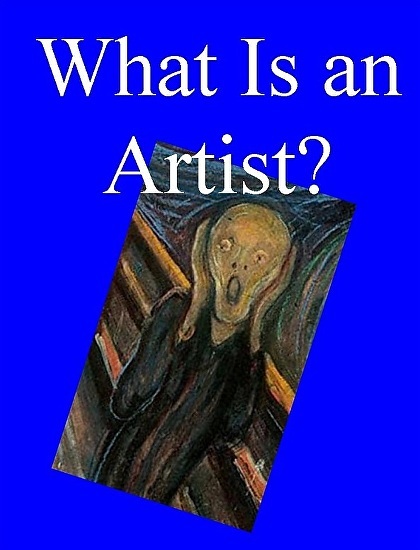 home
about
artists
exhibitions
press
contact
purchase
home
about
artists
exhibitions
press
contact
purchase |
|
|
http://faso.com/fineartviews/104323/the-definition-of-art-by-me
Statement A: The problem with the definition of art is that there is no such definition. Art is anything you, or anybody else, wants it to be. It can be representational or abstract, and whether or not it is good is totally subjective because there are no rules as to what makes good or bad art. Statement B: The best thing about the definition of art is that there is no such definition. There is no Art Police, no academy of Art Classification and Characterization that publishes a yearly tome of the rules and regulations designating what art is, what art looks like, and who fulfils the qualifications needed to be identified as an artist. Because, however, we live in a corporate- and corporation-enabling society, we have a tendency to gravitate toward Statement A in an unhealthy way, to the point that we refuse to make any judgment on art -- whether or not we like it, even -- because we might “offend” someone. In an odd twist, though, we often allow “Someones” to bite our open hand and offend us: academia comes to mind, pontificating that the time of representational art is over, and the time of what most people would call the contents of last week’s garbage can, reinvented into “sculpture,” has begun. (Oh -- Toto -- I just made a statement that could potentially be seen as judgmental . ) Or there’s that nebulous New York Art Scene voice, the Salon of the 20th and 21st centuries, announcing that this alabaster ornament, which to the uninitiated and obtuse looks like a white toilet seat, expresses a level of implication and significance that is close to defining the meaning of life, which, as all deep thinkers and followers of true spirituality know, has no meaning other than that it is meaningless. Somebody makes these statements, because we absorb them into our core, and yet when we try to pin them down, we can’t figure out where we’ve come up with these parameters, these rules in a discipline that, at times, prides itself on having no rules at all, and at others, defines what is exceptional, what is extraordinary, what is at the forefront of intellectual brilliance. If we don’t identify these invisible rules, and from there chase them down to as close to their source as we can get, we are in danger of comporting our lives -- as artists, as humans -- in accordance with other people’s beliefs, beliefs which, at base, may conflict with truths that we hold dear. I know, this is starting to sound serious. So let’s lighten it up and begin with something small, something simple, like,
Okay, let’s back up and go simpler: What is a REAL artist? I know many of you have asked that of yourselves, simply because I hear and see you asking it. If I may so observe, it seems to be a bit of a concern, at least when nobody else is looking. Is a REAL artist one who paints only in plein air, since the human eye captures colour in a way that the camera never can? For that matter, is it true that the human eye captures colour in a way that the camera never can? Simpler yet: does it matter? The issue of whether plein air is the ultimate art form is one that is bickered back and forth, to the accompanying yawns of artists who get really excited about graphic design, and couldn’t find a series of black and white symbols on a red background out in the wild whether or not they wanted to. Well, do REAL artists use cameras? Or paint off their computer screens? Do REAL artists use references at all, or do they paint from, as a child once said, out of their minds? And how often do REAL artists paint, anyhow? Hours a day? For weeks at a time with no breaks? And do REAL artists have day jobs? Or do REAL artists make their living off of their art? And does “make a living” mean just barely making it? Is it fair to have a spouse with a steady job? Is it cheating to work outside the studio part-time, and in the studio part-time? What ratio between the two is acceptable? Whether or not we’ve sat at the table with a bunch of people who may or may not call themselves real artists, and bandied back these questions, many of us have had them -- sometimes still do have them -- and the satisfaction of using our creative ability is dampened, at the oddest times, by some of these nagging, niggling, irritating, quibbling little questions. Many people -- especially those who make money off their answers -- are ready to voice their opinion, but ultimately, the person who needs to answer these questions, to his or her own satisfaction, is the individual artist. Join me next time at Yes or No -- Am I an Artist? |
|
|
|
return
|

 This
article is by
This
article is by 